Four pieces on Kyoto
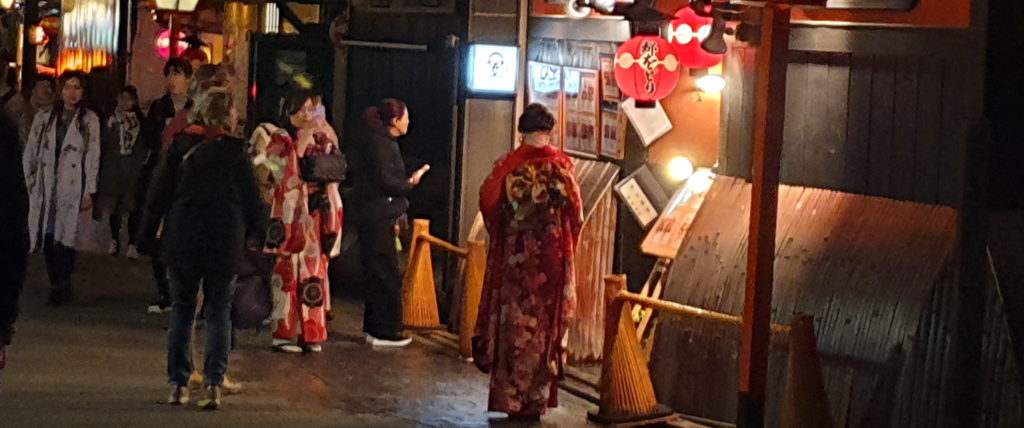
Kyoto looks like any crowded city with the usual traffic and thronging pedestrians until you step into the grounds and gardens of its temples and shrines, whereupon you will be transported into a different world of peace and calm. Having visited many of these gardens in our last few trips to Kyoto, we decided to look at other facets of the city this time in the two days we were there in Spring 2019.
Kyoto street scene: the allure of kimonos
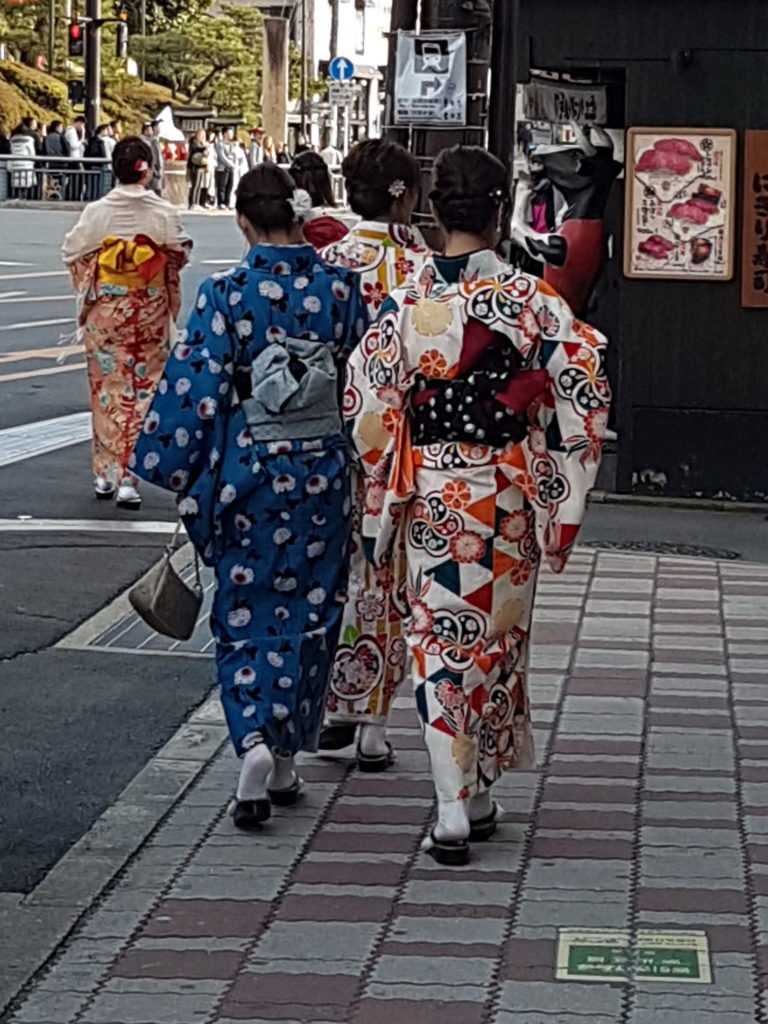
Wherever we are, it is always a delight to see people dressed up in their traditional garb strolling leisurely in busy streets. It is as though some time travellers from the past are enjoying the marvels of our modern lives. After our visit to serene Yoshiminedera on the quiet outskirt of Kyoto the previous day, the city streets were somewhat overwhelming in sight, sound and energy. Out of the patches of crowd surging in the streets, we could count more than the usual number of women dressed in kimonos. In past visits, we were lucky to see one or two passing by, mostly in and around temples and shrines. My wife suggested that it could be spring graduation period now or an auspicious day to visit shrines and religious places. Or maybe they were planted by the Japan Tourism Board.
I would be self-conscious wearing a traditional dress and sticking out of the crowd no matter how impressive I look. However, the kimono-clad young women (all of them youthful) walked with grace and confidence among the nonchalant crowd. They were everywhere — strolling happily along the busy streets and up close in crowded buses. Of course, some were tourists who dressed up to thoroughly soak in the Japanese atmosphere (and get discounted admission tickets to some establishments, I was told). Their enthusiastic immersion in the country they travelled in earned my full admiration.
I observed that one way you can tell a genuine kimono-clad Japanese from a masquerading tourist is their hairdo. The genuine article had carefully done-up hair looped artistically with shiny pins and cute accessories which obviously took hours to groom. The tourist who walked into a kimono rental shop was unlikely to mess with her hairdo. Authentic or not, the sight of women dressed up in traditional kimono (or yukata) mingling with the crowd really heightened the ambience of the place. Strangely I did not see many men dressed up in their kimono equivalent.
Instant cultural show

For a taster of traditional performing arts in Japan, we headed to Gion Corner in tourist infested Gion District. It was one of those days that Google map failed us miserably. After dutifully following Google map’s direction to Gion Corner, we ended up in an obscure lane with a sign hung up in the purported destination, “Gion Corner is not here”. I can imagine the frustrated owner of the property busily shooing off hand-phone touting lost tourists ever since Google map came into being. Luckily, we started early and had plenty of time to find the actual location.
The Gion Corner Cultural Show at Yasaka Hall was less than an hour long and cost slightly more than 3,000 yen, which was a bit on the expensive side. I suppose most tourists succumb to the Law of Tourist Spending, i.e. “A tourist is willing to pay a higher price to experience a highly hyped attraction in case he regrets on missing out when he returns home.”
The short show was quite pleasant, with enough variety in the seven items to hold the interest of tourists, even those who just come to Japan to shop and eat. The show began with a tea ceremony demonstration on the right side of the stage. Before you know it, a flower arrangement demonstration started to divert your attention and all the while another two ladies were playing their kotos (string instrument) on stage. It was difficult to enjoy this portion of the show while my eyes darted from one end to the other trying to follow two unrelated performances. After a while, I gave up and slumped back on my seat, closed my eyes and just listened to the two ladies plucking plaintive notes out of their kotos.
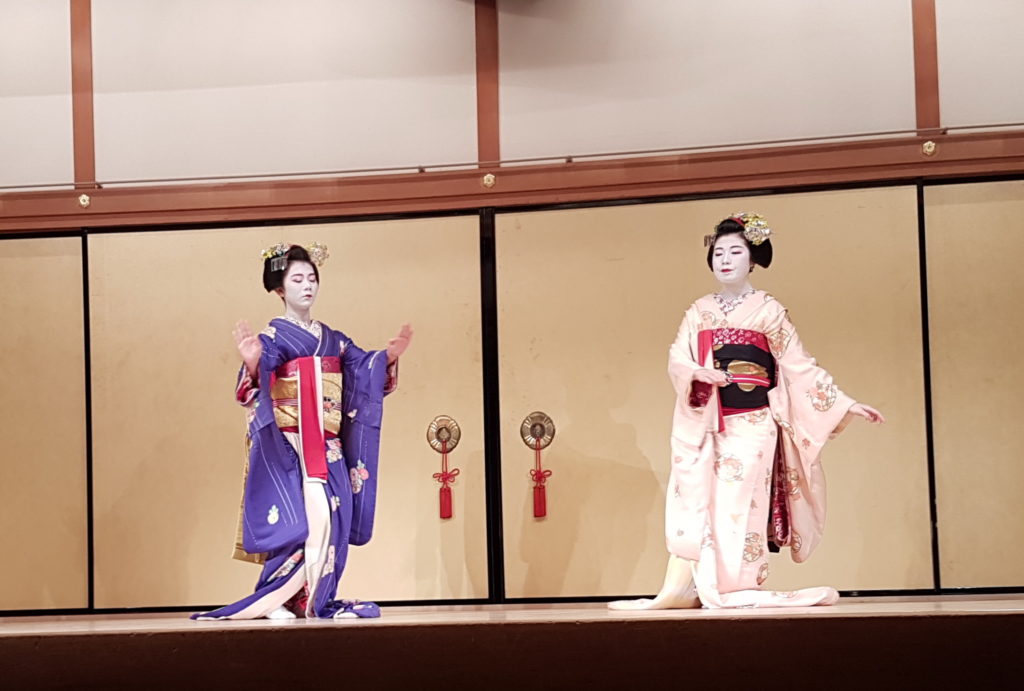
Luckily the rest of the song and dance items did not require further multitasking – actually they were quite contrasting and well balanced. Two kimono-dressed dancers performed a Kyomai; a dance style originated from Kyoto. Most of the time they danced like a mirror image of each other, but occasionally one will stoop down or gesture differently to remind us that they are no mere double.
The Gagaku court music item featured piercing flutes, gongs, drums and a fearsome-looking masked male dancer. The music sounded very dissonant, perfect for cleaning up all the muzak after hours in shopping centres.
Kyogen theatre, a kind of comic routine traditionally put up in between acts in no-nonsense Noh plays was performed by three men and an obligatory prop (a pole in this case). Though we did not understand the dialogue, there was plenty of slapstick, the universal language to elicit laughs from the misery of others.
The last item was the unique Bunraku puppet theatre. A half life-sized puppet in red and white kimono was manipulated by performers dressed in dark clothing to hide their presence. I suppose the audience have to pretend that the puppet was acting on her own. If your imagination faculty works well, you could see the intricate movements of the puppet as she moved about, got distracted after reading a scroll, presumably a letter, climbed up to a tower and struck the bell several times. I did not quite follow the story, but from the sound of the accompanying soulful music, the scene must be from some tragedy.
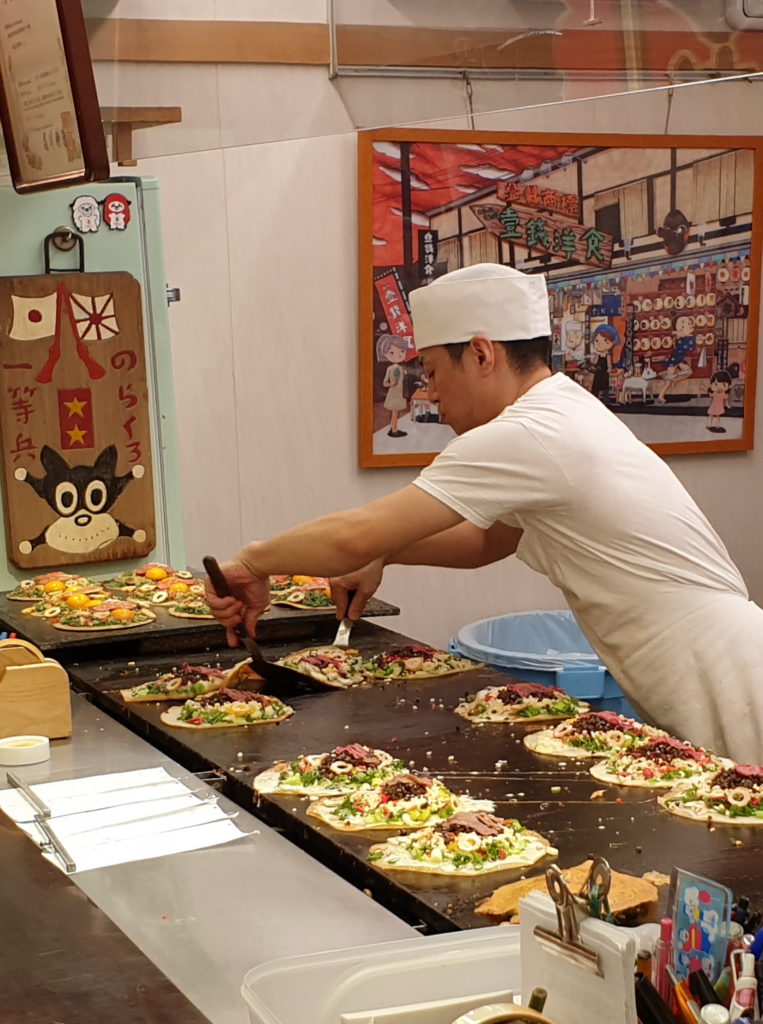
After one hour of instant culture, it was time for another type of culture of the gastronomic kind. We walked to Issen Yosyoku Kyoto, apparently a well-known restaurant serving okonomiyaki, an omelette dish served with loads of meat and vegetables in sweet sauce. It was too sweet for me. More interestingly, if you dine alone at the restaurant, you can sit with full-size dolls to keep you company. While waiting for your food, you can let your eyes wander to some hanging wooden blocks engraved with saucy cartoons of naked bodies and try to decipher the accompanying Japanese text – another cultural diversion.
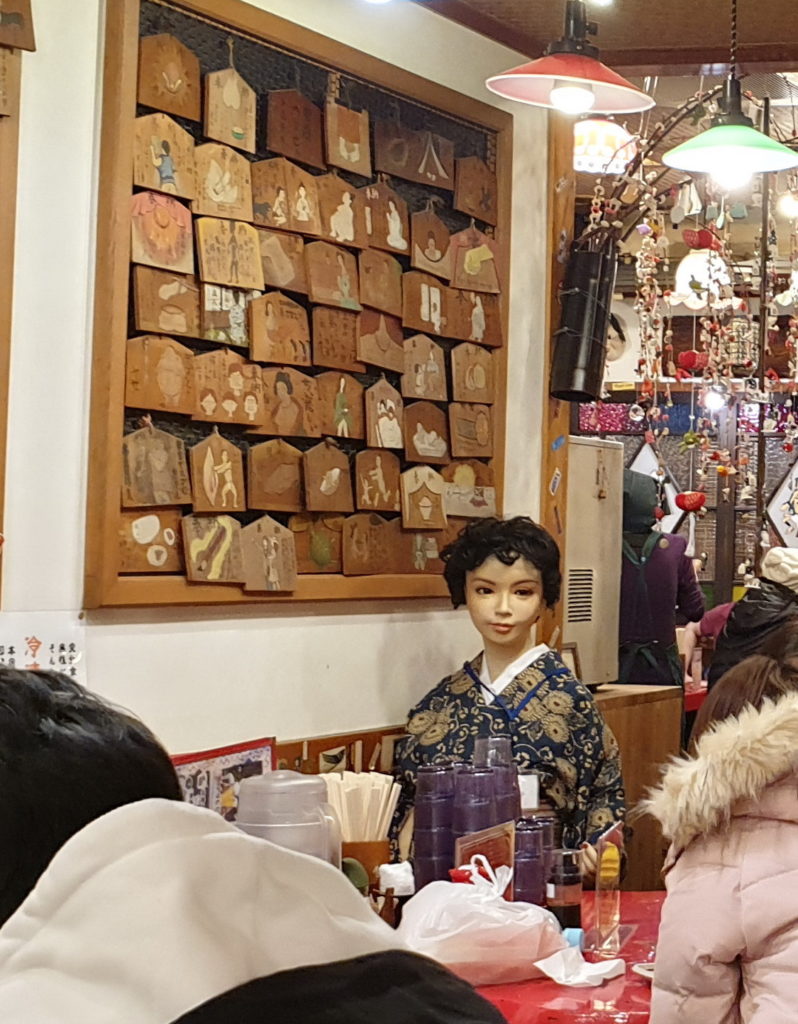
Philosopher’s path
There are many roads and places named after famous people or personalities of note, but few after a profession, occupation or vocation. It is hard to find a Librarian Lane, a Chemist Road or Prime Minister Walk. But there is a Philosopher’s Path in Kyoto. It could very well be called Nishida Kitaro Path (the philosopher who inspired the place name), but I bet it would not be as attractive to tourists and locals alike as the more generic “Philosopher’s Path”. The idea of walking along the path of a famous philosopher, negotiating the bends he turned, seeing the flora he saw and perhaps feeling his lingering spirit seems appealing. No need to know his name.
However, Nishida Kitaro was the foremost philosopher in Japan at the turn of the twentieth century. He founded the Kyoto School of Philosophy, blending Western philosophy with eastern and Buddhist traditions. Because of his fame, he was requested to help justify the expansionism of Japan during World War Two. Hoping to change the direction of an imperialistic to a more harmonious political approach, he drafted an article for the wartime Prime Minister Tojo’s speech for the Great East Asian Co-prosperity Declaration. Instead, the article was heavily edited without his knowledge to justify Japan’s aggression in Asian countries. Though he wrote a third version to clarify his position after he heard the speech, he felt betrayed and died shortly in 1945, probably an unhappy man.
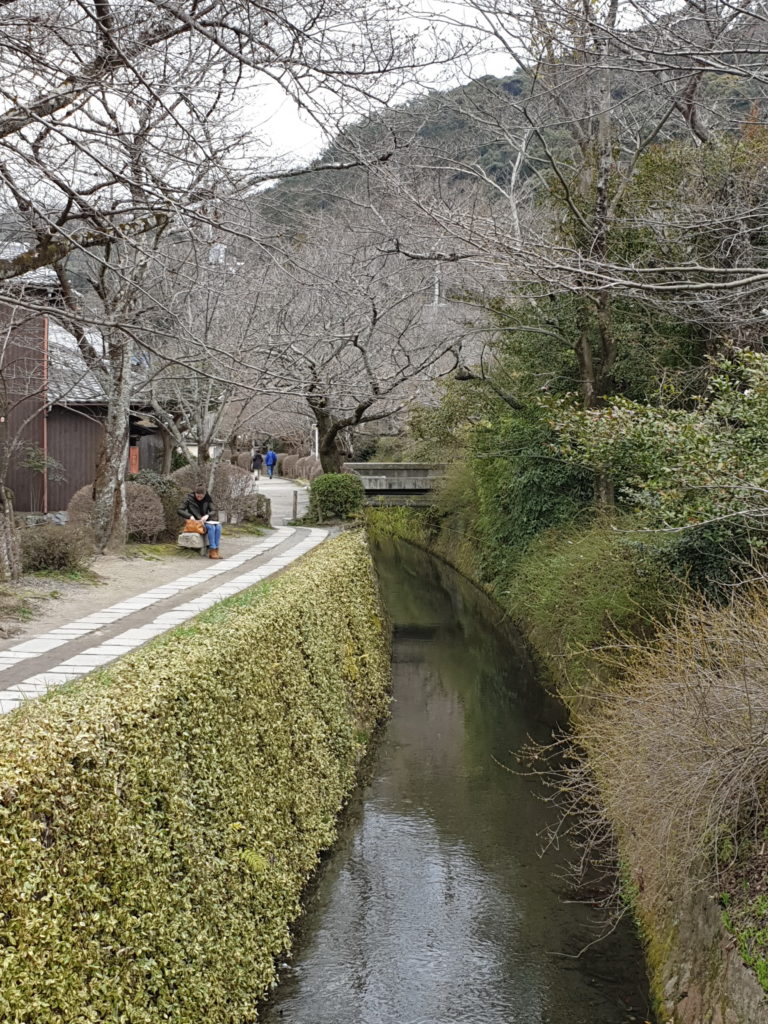
The main attraction of the Philosopher’s Path is the multitude of cherry blossom trees lining the sides of the flowing canal. Unfortunately, it was not quite the season yet when we took our walk. There was some lonely cherry blossom here and there but none that compare to the profusion we seen in pictures online. In compensation, the route was quiet, uncongested and still quite pleasant to walk. We were not quite sure where the Philosopher’s Path begins, so we just follow the general direction towards Ginkakuji Temple. There are several temples and shrines that can be explored along the route if you have time to wander around.
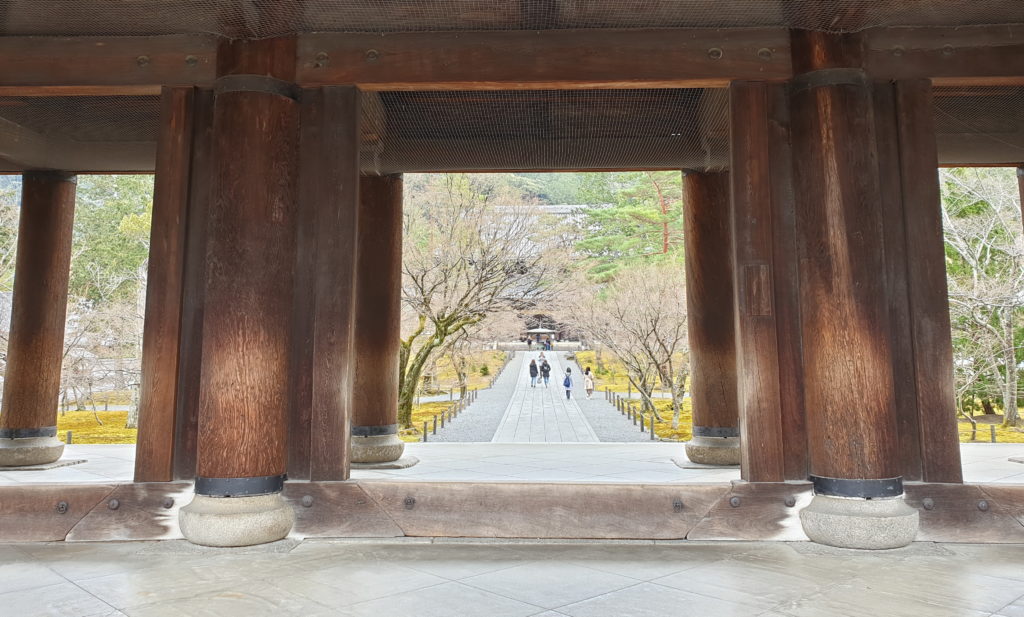
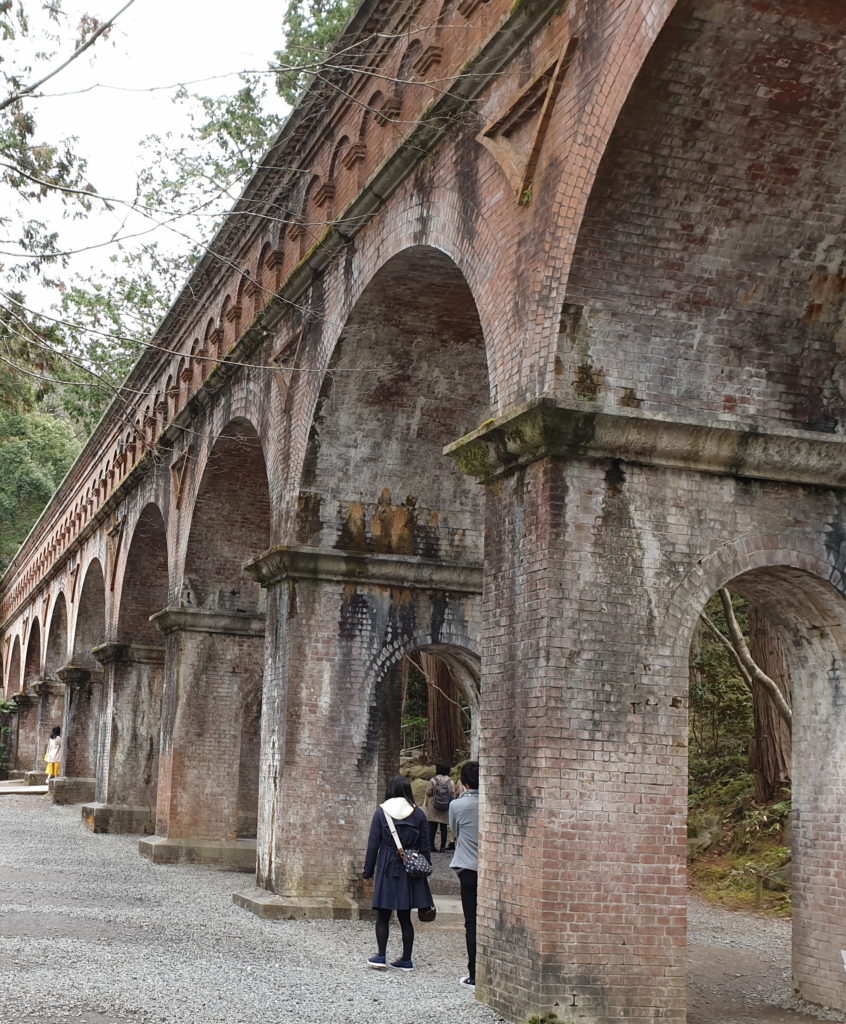
We started the walk from Nanzanji Temple, characterised by the huge Sanmon Gate at the entrance. Walking further in, behind the temple, we were surprised to find an aqueduct, which seemed quite out of place, like a part of Rome jutting out from another dimension in time.
Further up the route, we also visited Honen-in Temple. In contrast to the massive Gate at Nanzanji, Honen-in features a lovely human-scale gate with immaculately fashioned thatched roof sprinkled with moss and fallen green leaves. It is quite a small temple, tranquil, but not particularly distinctive except for the thatched roof gate and moss-covered surroundings.
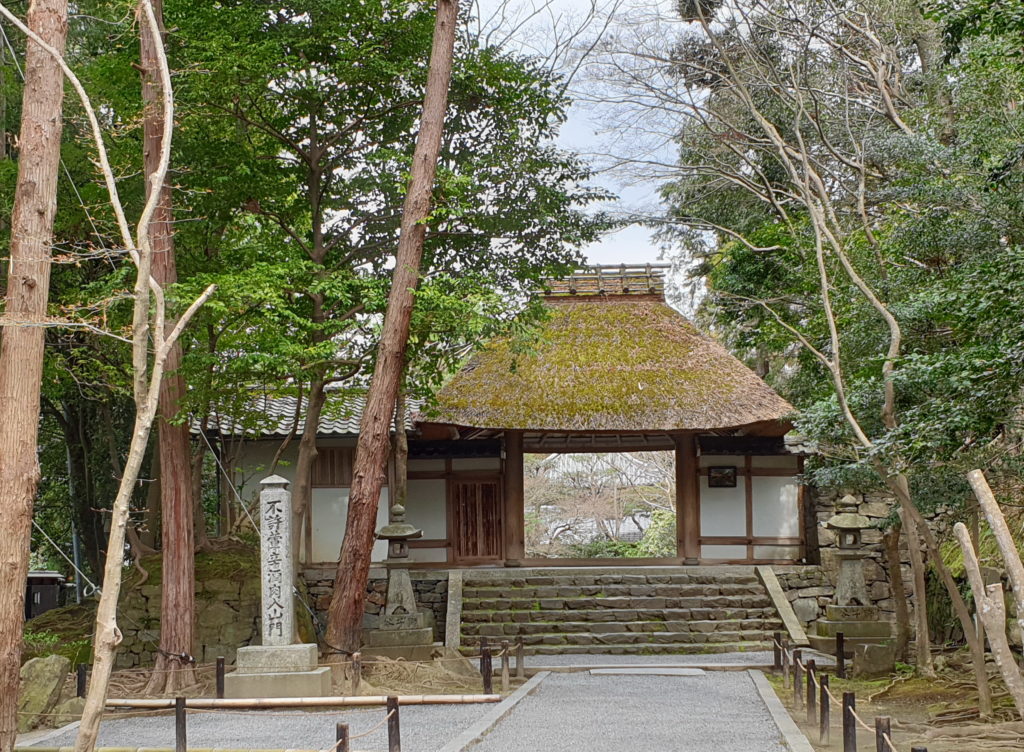
The Café in the forest
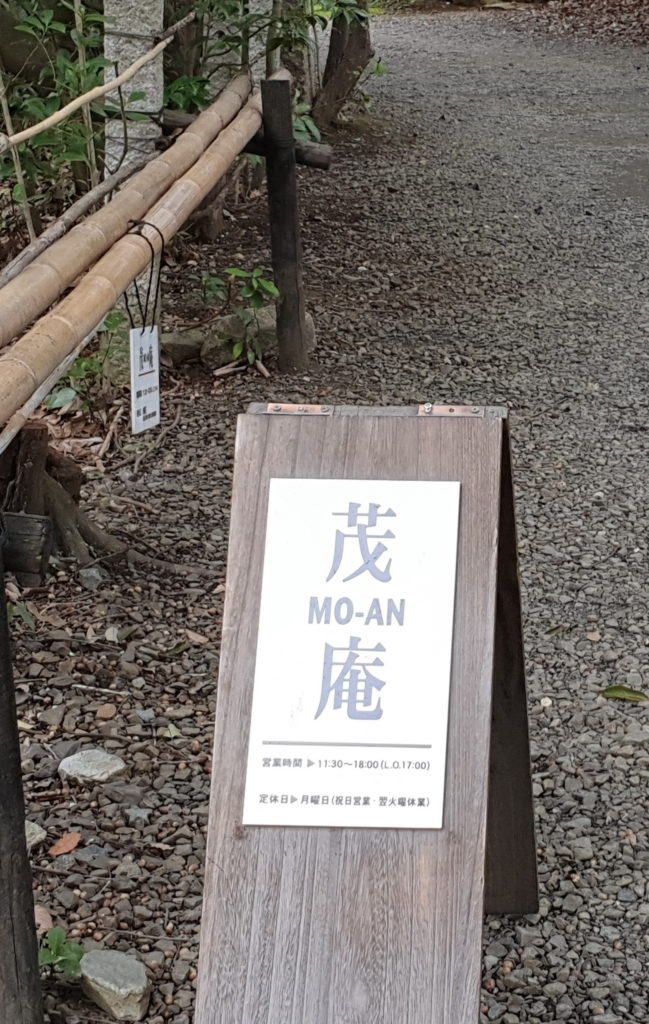
Our last destination before we leave for Nagoya was the out-of-the-way Café Mo-an in the middle of a forest. It was quite difficult to find. As it was not near to any bus lines, we decided to walk our way there from Honen-in. We passed through residential areas, admiring the small garden plots with the occasional cherry blossom sticking out of fences. After more than the allotted time for finding the way there, we finally spotted the restaurant signboard on a pebble path.
There must be several ways to get to the café, but our approach through the winding path was a miniature adventure itself, which added to the pleasure (mostly psychological reward for effort) of the eventual meal we had there. The café is housed in a two-storey timber building amidst untidy trees and woody shrubs—this is not in a manicured garden. We have to take off our shoes on the ground floor before climbing up to the café above.
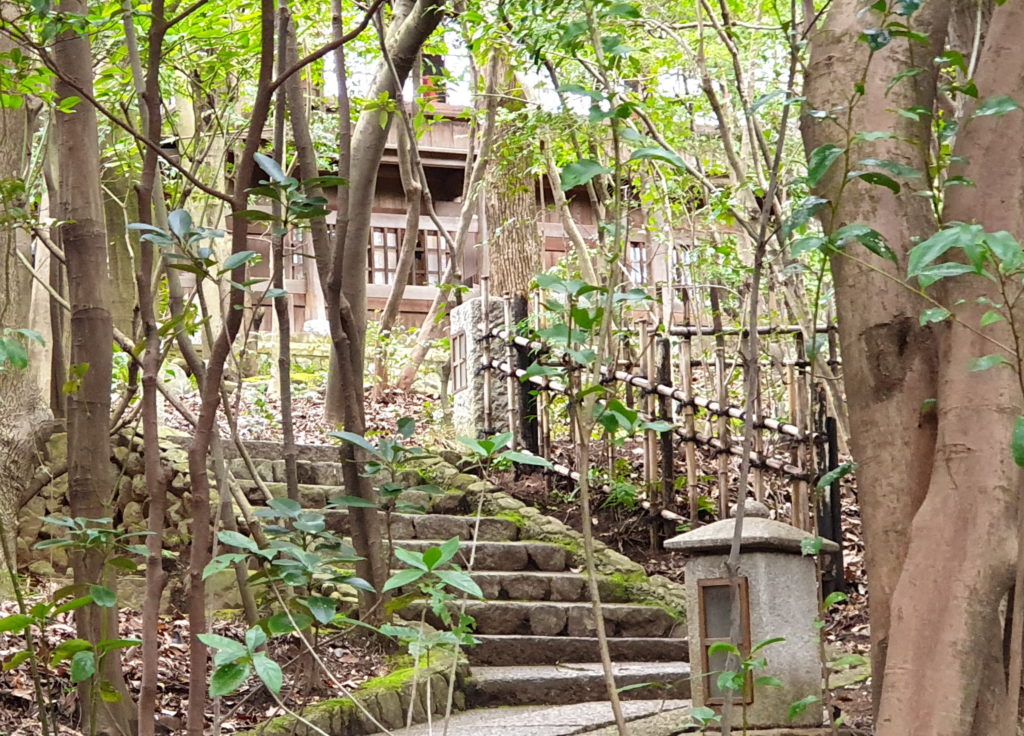
After settling down in a good window seat, I was about to take out my phone camera to capture the lovely interior when I noticed the printed placard to advise patrons to refrain from taking pictures as it may disturb and invade the privacy of other patrons – or something to that effect. Hike and sweat all the way to the café and not take some pictures? A tall order. But we obeyed, largely. The reminder made sense though in today’s ubiquitous electronic eyes society. If you are running from the law, hiding from debtors or is with someone you should not be with, you don’t want to be an accidental head in any tourist holiday snaps which may end up in social media.
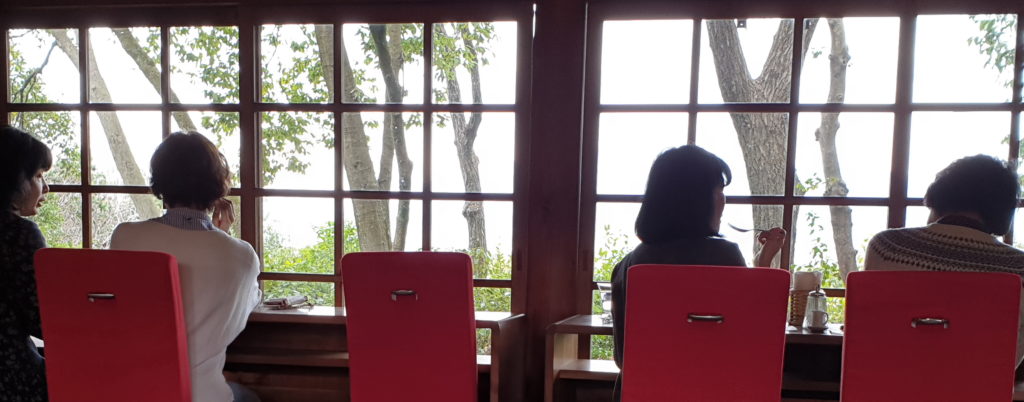
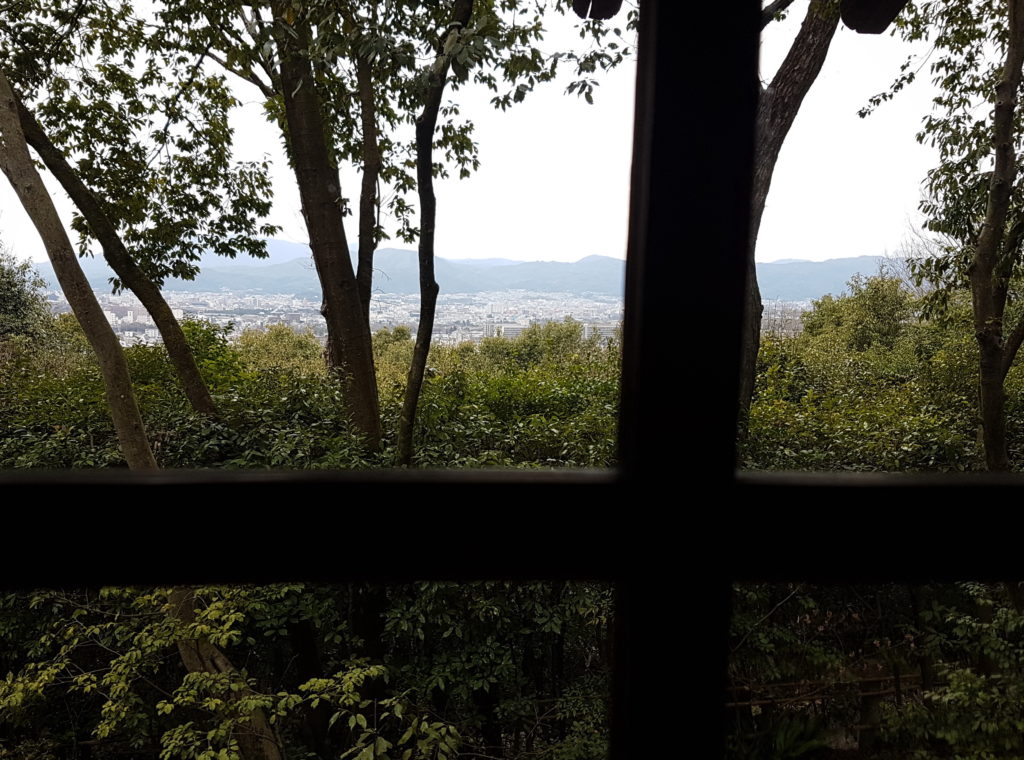
One can spend hours here just sipping beverages and enjoying the ambience in the café, but we must rush back to our hotel, check out and catch a train to our next adventure in Kiso Valley. The journey back looked easy on paper but getting down the hill to the nearest bus stop was quite challenging as Google map does not show every tree and boulder to signpost you to your destination. As usual, we found the bus stop in the nick of time. It was not far from Kyoto University, the intellectual home of Nishida Kitaro of the Philosopher’s Path fame. Perhaps the forest at Mo-an Café was one of his favourite haunts too, in which case naming it as the Philosopher’s Hill would be appropriate.